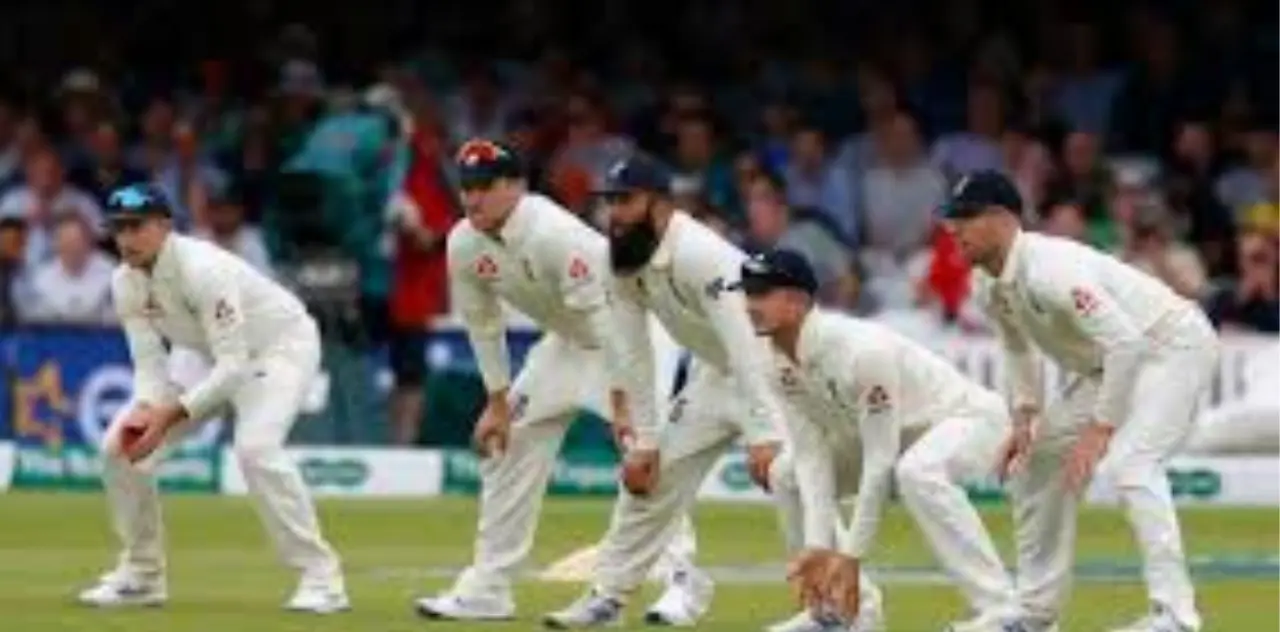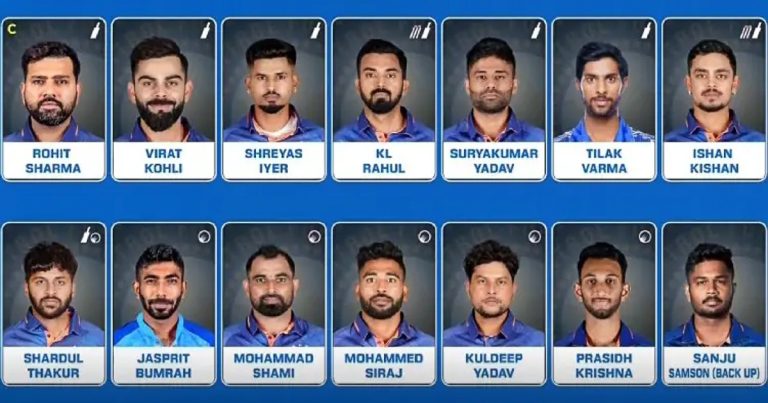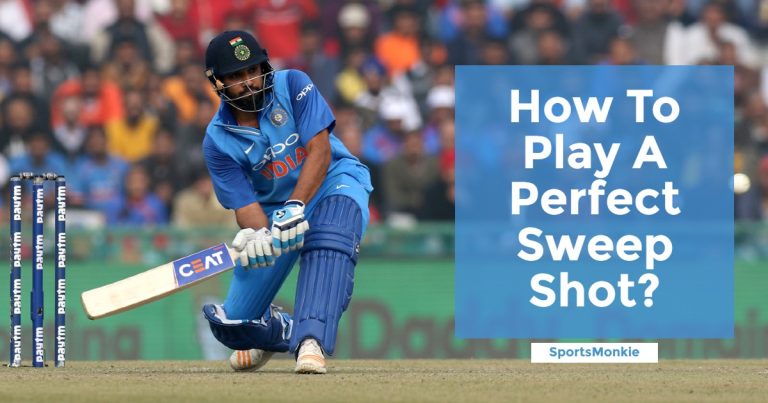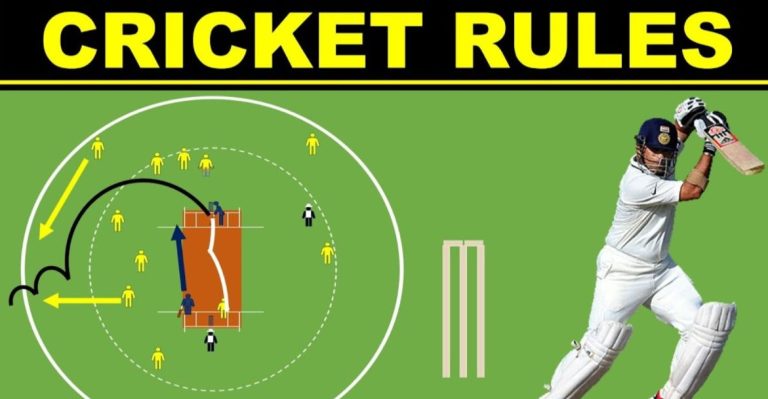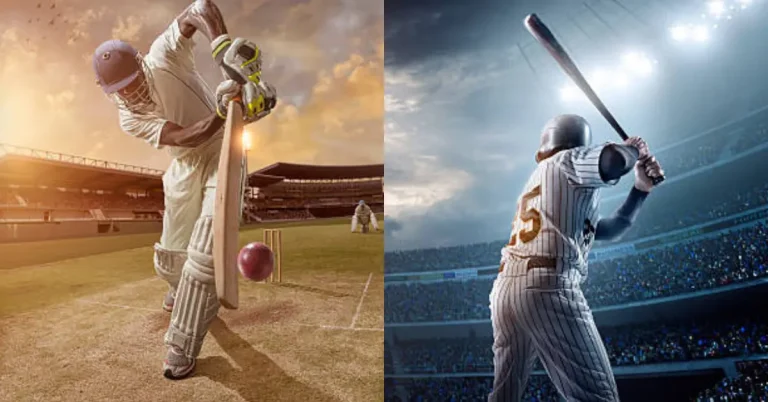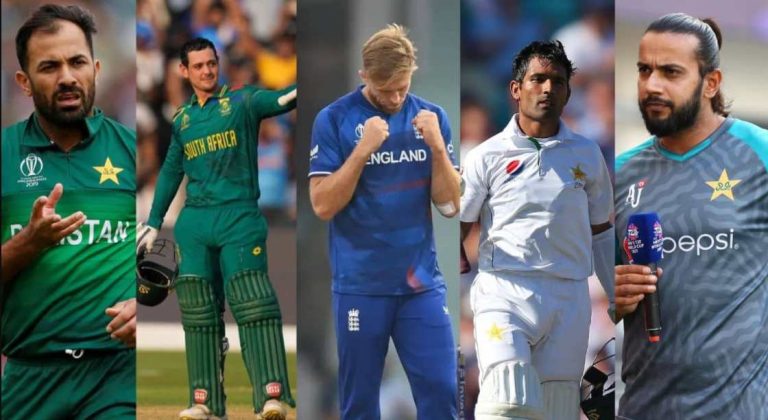Fielding Positions in Cricket: Positions in Powerplay and Chart
Cricket is a game with lots of rules and positions on the field. Fielding positions are super important, and each player has a special spot to protect the field and catch the ball. In this article, we’ll talk about these fielding positions and why they matter.
Understanding Fielding Position in Cricket
1. Slips
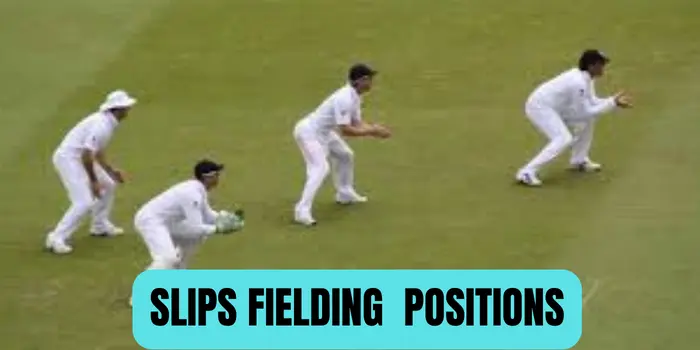
– Role
Slip fielders stand close to the batsman, ready to catch any edges.
– Key Positions
First slip, second slip, third slip.
2. Gully
– Role
Fielders in the gully position stand close to the slips to catch edges not covered by the slips.
– Key Position
Gully.
3. Point
– Role
Positioned behind the batsman on the off-side, point fielders stop hard-hit shots.
– Key Position
Point.
4. Cover
– Role:
Cover fielders stand on the off-side, saving runs by diving to stop the ball.
– Key Position:
Cover.
5. Mid-off/Mid-on
– Role
Fielders at mid-off and mid-on stand on the front and back of the pitch, preventing straight hits from the batsman.
– Key Positions
Mid-off, mid-on.
6. Mid-wicket
– Role
Positioned on the leg side, mid-wicket fielders aim to stop shots in that direction.
– Key Position:
Mid-wicket.
7. Fine leg/Square leg
– Role
These fielders patrol the leg side, close to the batsman, preventing easy runs.
– Key Positions
Fine leg, square leg.
8. Long leg/Deep Square leg
– Role
Fielders in these positions are stationed in the deep to catch or stop boundary-bound shots on the leg side.
– Key Positions:
Long leg, deep square leg.
9. Third man/Backward point
– Role
Placed behind the batsman on the off-side, these fielders aim to catch or stop edges and deflections. See Also: Cricket Ground Size: Dimension
– Key Positions
Third man, backward point.
10. Extra Cover
– Role
Extra cover fielders stand on the off-side, deterring aggressive drives.
– Key Position
Extra cover.
11. Silly Point/Short Leg
– Role
These fielders stand very close to the batsman, attempting to catch deflections and prevent easy singles.
– Key Positions
Silly point, short leg.
12. Deep extra cover/Deep point
– Role
Positioned in the deep, they protect the boundaries on the off-side.
– Key Positions
Deep extra cover, deep point.
Cricket fielding positions chart
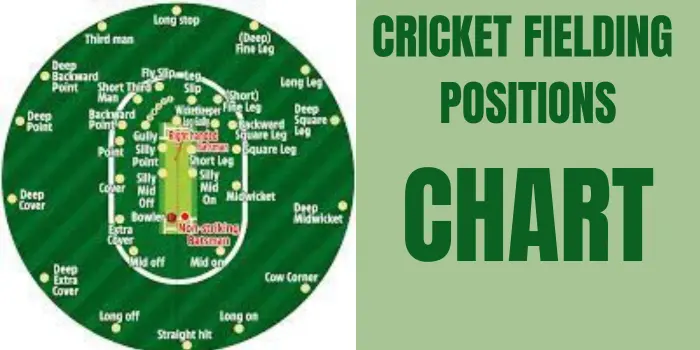
Cricket Fielding Positions in Powerplay
In cricket, during the powerplay, which is the initial phase of an innings, fielding positions play a crucial role in containing the batting side and taking wickets. Some common fielding positions in the powerplay include: See Also: What is a Powerplay in Cricket
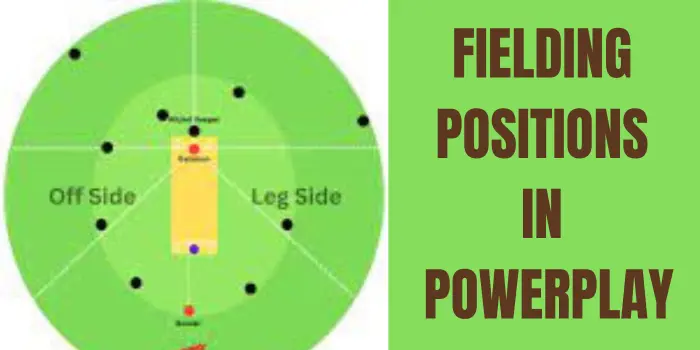
1. Slip Fielders: These are usually placed close to the wicketkeeper to catch edges off the bat, particularly for fast bowlers.
2. Gully: Positioned slightly behind the slip fielders, gully is also there to catch edges.
3. Point: Located on the off-side, point is a catching position to stop shots played square of the wicket.
4. Cover: This fielder is placed to cover the region between point and mid-off to stop drives and take catches.
5. Mid-off and Mid-on: These fielders are strategically placed in front of the batsman to prevent straight hits.
6. Fine Leg and Third Man: Positioned on the leg and off-side boundaries, respectively, these fielders are placed to stop shots played down the leg and off-side.
7. Silly Point and Short Leg: Very close to the batsman, these fielders are placed to catch deflections off the bat or pad.
8. Deep Fielders: In limited-overs formats, there may be deep fielders near the boundary to prevent boundary shots. See Also: Longest Six in Cricket History
The placement of fielders in the powerplay can vary based on the bowler’s strategy and the batsman’s strengths, aiming to create pressure, take wickets, and control the game’s early stages.
The Significance of Fielding Positions
Fielding positions are meticulously planned to adapt to various game situations. They aim to minimize the opposition’s run-scoring opportunities, capture wickets, and maintain a stronghold on the game. Understanding these positions and their roles is essential for cricket players and enthusiasts alike.
Conclusion
Cricket fielding positions are not just arbitrary; they are strategically placed to maximize a team’s chances of success. Each position plays a vital role in defending the boundary, capturing wickets, and ultimately, winning the game. Understanding these positions is key for cricket players and fans who wish to appreciate the finer details of this captivating sport.
The slips are often considered the most critical fielding positions in cricket, as they are strategically placed to catch edges off the bat.
Fielding positions are named after the areas they cover to make communication and strategy implementation easier among team members.
Yes, fielding positions can change depending on the batsman’s strengths, the bowler’s tactics, and the game situation.
Practicing regularly, improving reflexes, and maintaining fitness are essential for honing your fielding skills.
A good fielder in cricket should have quick reflexes, agility, excellent throwing skills, and a strong understanding of fielding positions.

